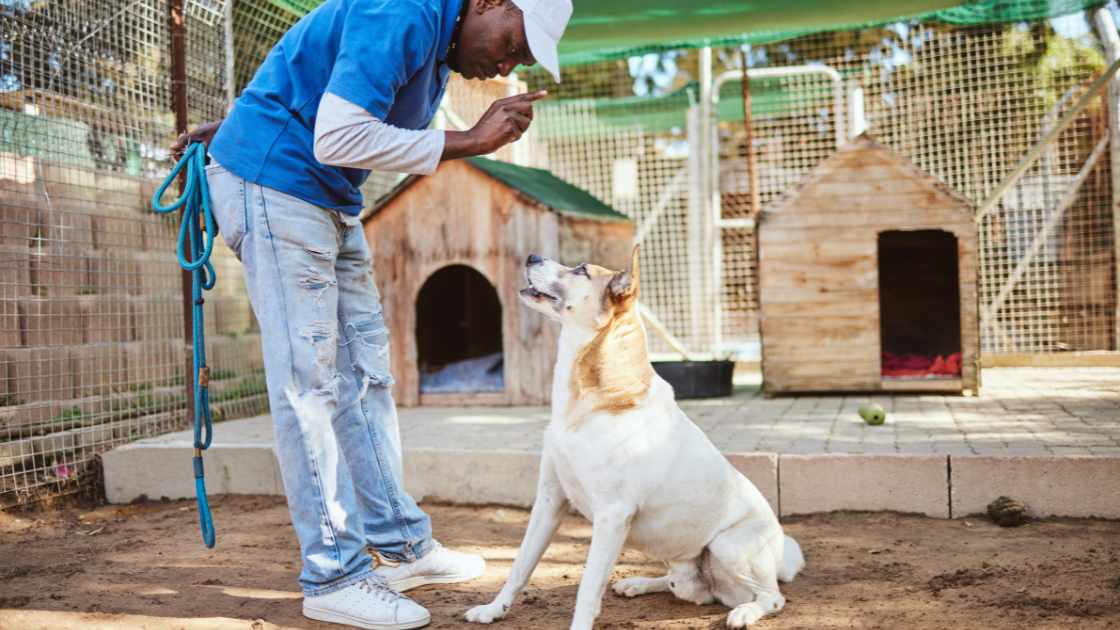
Table of Contents
ToggleUnleashing the Herding Instinct: A Guide on How to Teach Your Dog to Herd
Understand the Breed’s Herding Instinct
Before you begin training, familiarize yourself with your dog’s breed characteristics. Different herding breeds may have distinct herding styles, and understanding these instincts will help you tailor your training approach.
Basic Obedience Training
Ensure your dog has a solid foundation in basic obedience commands like “sit,” “stay,” “come,” and “leave it.” These commands form the basis for effective communication during herding training.
Expose Your Dog to Livestock
Introduce your dog to livestock gradually. Start with calm and predictable animals, such as chickens or ducks, in a controlled environment. Allow your dog to observe and get accustomed to the presence of livestock.
Focus on Recall and Attention
Work on strengthening your dog’s recall and attention skills. Use treats, toys, or positive reinforcement to encourage your dog to return to you promptly and maintain focus even in the presence of distractions.
Teach the Flank Commands
The flank commands, “away to me” and “come by,” are crucial for directing your dog around the livestock. Start with one command at a time, using a combination of vocal cues and hand signals. Reward your dog for correctly responding to the commands.
Introduce Boundary Commands
Teach your dog to respect boundaries by using commands like “steady” or “easy.” This helps control your dog’s pace and prevents overexcitement, ensuring a calm and controlled herding experience.
Gradually Increase Difficulty
As your dog becomes more proficient in basic herding commands, gradually introduce more challenging scenarios. Increase the number of livestock, vary the terrain, and incorporate obstacles to keep the training sessions engaging and stimulating.
Patience and Positive Reinforcement
Patience is key in herding training. Reinforce positive behavior with treats, praise, and play, while avoiding punishment for mistakes. Building a positive association with herding activities encourages your dog to enjoy the process.
Regular Practice
Consistent practice is essential for reinforcing herding skills. Regular sessions, even if brief, help maintain your dog’s proficiency and confidence in herding activities.
Seek Professional Guidance
If you’re new to herding training or encounter challenges, consider seeking guidance from a professional dog trainer experienced in herding. They can provide personalized advice and address specific issues you may face during the training process.
FAQs
Can any dog be trained to herd, or is it specific to certain breeds?
While herding instincts are more prominent in certain breeds, many dogs can be trained to herd to some extent. Breeds like Border Collies, Australian Shepherds, and Shetland Sheepdogs naturally excel in herding, but with patience and proper training, other breeds can also learn basic herding commands and skills.
Do I need access to livestock to teach my dog to herd?
While having access to livestock is beneficial for herding training, it’s not always necessary in the initial stages. You can begin by teaching basic commands and practicing recall and attention skills in controlled environments. As your dog progresses, introducing them to calm and predictable livestock, such as chickens or ducks, can enhance their herding experience.
How long does it take to train a dog to herd?
The duration of herding training varies based on factors such as the dog’s breed, age, and individual learning pace. Consistent and positive training sessions over several weeks or even months are usually required. Regular practice and patience are key to developing a strong foundation in herding skills for your dog.
Final Thought
Teaching your dog to herd is a fulfilling journey that taps into their natural instincts. Through patient and positive training methods, you can cultivate a strong working relationship with your dog while enjoying the age-old art of herding. Embrace the learning process, celebrate small victories, and watch as your canine companion transforms into a skilled and confident herder.
